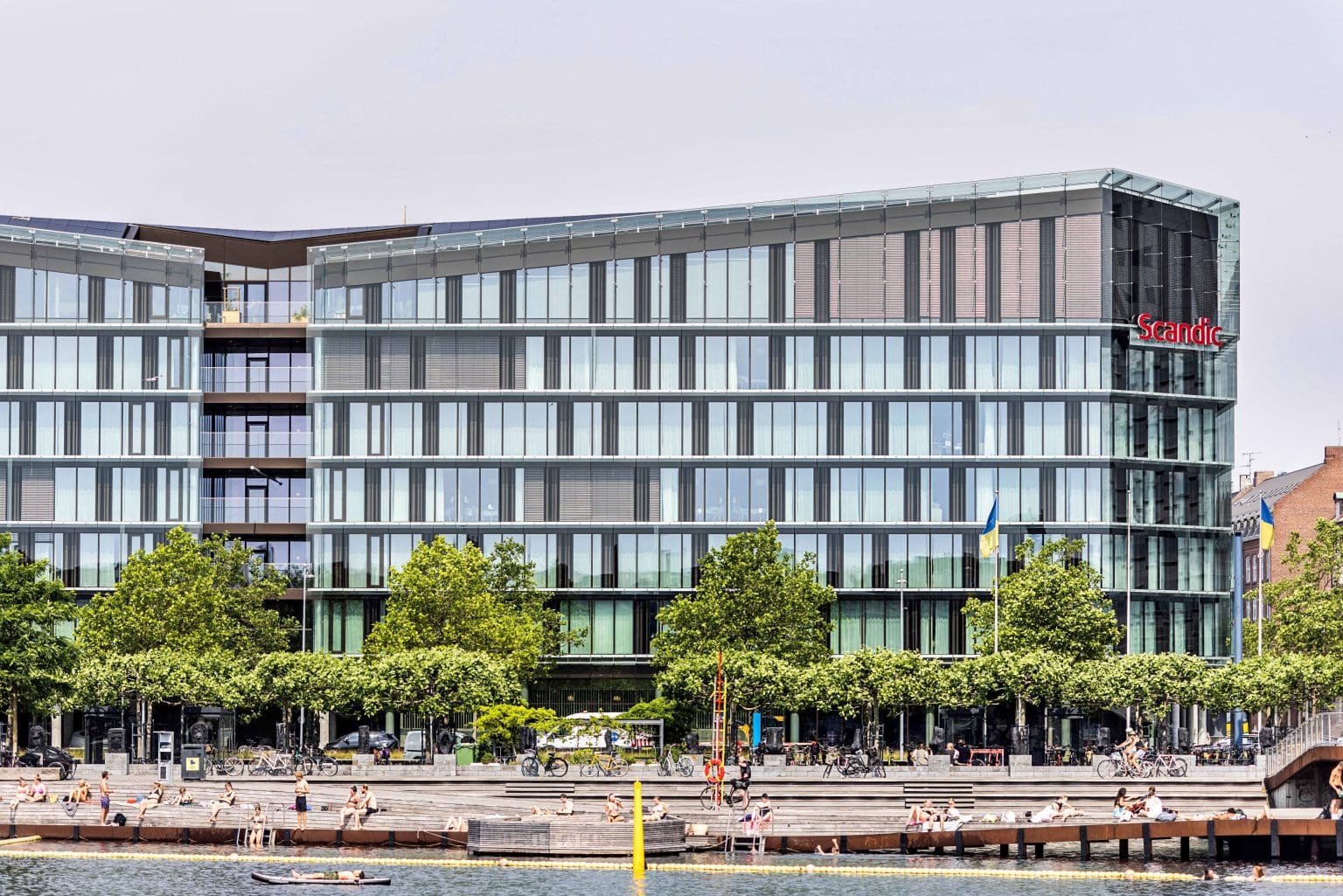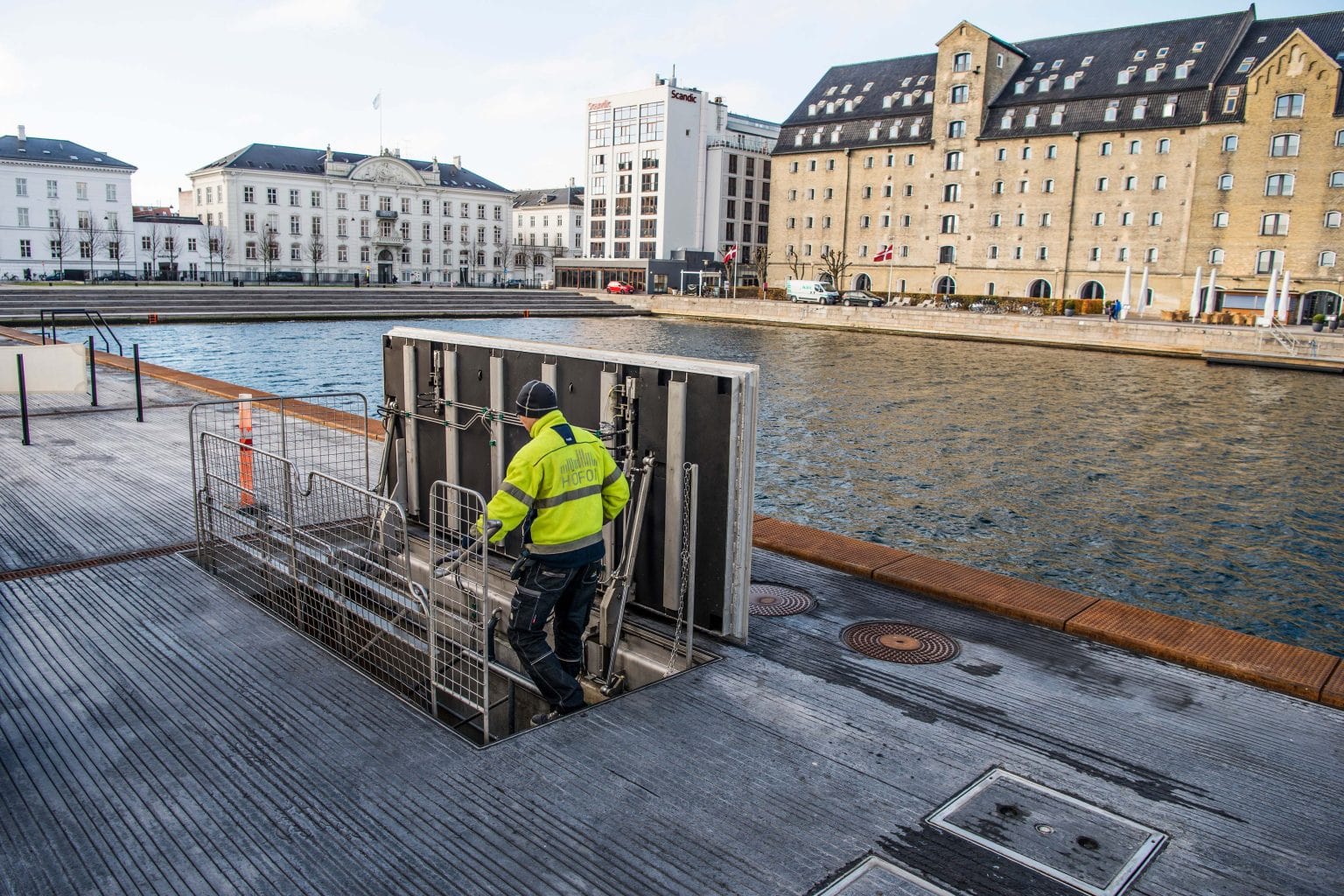Ofelia Plads
Beneath Ofelia Plads lies one of HOFORS’ main chambers. Photo: HOFOR
News
District cooling
Buildings
Climate change adaptation
+3


Header photo credit: Scandic Hotels
Hotels in the Danish capital are utilising district cooling to chill down guests. By pumping water from the port through pipes in a renewable cycle, the solution both reduces CO2 emissions and trims energy consumption.
As of 2023, approximately 8500 hotel rooms have been equipped with innovative air conditioning systems powered by seawater. This is an increase of 112.5% from 2018. The water is derived from the Port of Copenhagen, and the solution is called district cooling, which is attractive as it emits less CO2 than traditional electric air conditioning systems.
“When a property connects to our district cooling, it reduces CO2 emissions by up to 70% compared to using local end-of-life cooling systems. Seawater requires less electricity, and the individual property can thus save up to 40% compared to local electricity-powered systems,” says Jakob Thanning, District Manager of Customer Solutions & District Cooling at HOFOR.
Copenhagen comprises just under 24,000 hotel rooms, and Scandic Hotels is one of the hotel chains that makes use of district cooling.
“It is a great advantage for us that we can use district cooling from seawater, as it allows us to reduce CO2 emissions in our hotels. At Scandic, we work purposefully to reduce our climate impact, and therefore it makes very good sense for us – also because we can remove noisy local installations from the hotel roofs. Instead, we are granted the opportunity to install e.g. solar panels,” says Tage Holck, Director of Technical Services at Scandic Danmark.
In addition to this, district cooling similarly allows for better utilisation of the properties’ valuable square meters. Jakob Thanning elaborates on this by mentioning that the district cooling solution allows for more room on building facades and rooftops, as the system is contained underground. This is essential in a city like Copenhagen, as space is becoming increasingly scarce. Also in terms of accomodating the many tourists flocking to the Danish capital.
“The sustainable transformation of the capital’s tourism industry is a huge task. Most recently, we launched the sustainability manifesto for the tourism industry, Planet Copenhagen, which will create actions and provide solutions that contribute to more sustainable tourism in the capital. With focus on reducing CO2 emissions, district cooling of hotel rooms is a great example of the initiative pushing us in the right direction,” says Runa Sabroe, Development Director at Wonderful Copenhagen.
In addition to Copenhagen’s hotels, several banks, museums, and department stores also use the attractive remote cooling solution.
Beneath Ofelia Plads lies one of HOFORS’ main chambers. Photo: HOFOR

solutions
Combined heat and power production
+6
solutions
Energy efficiency in buildings
+2